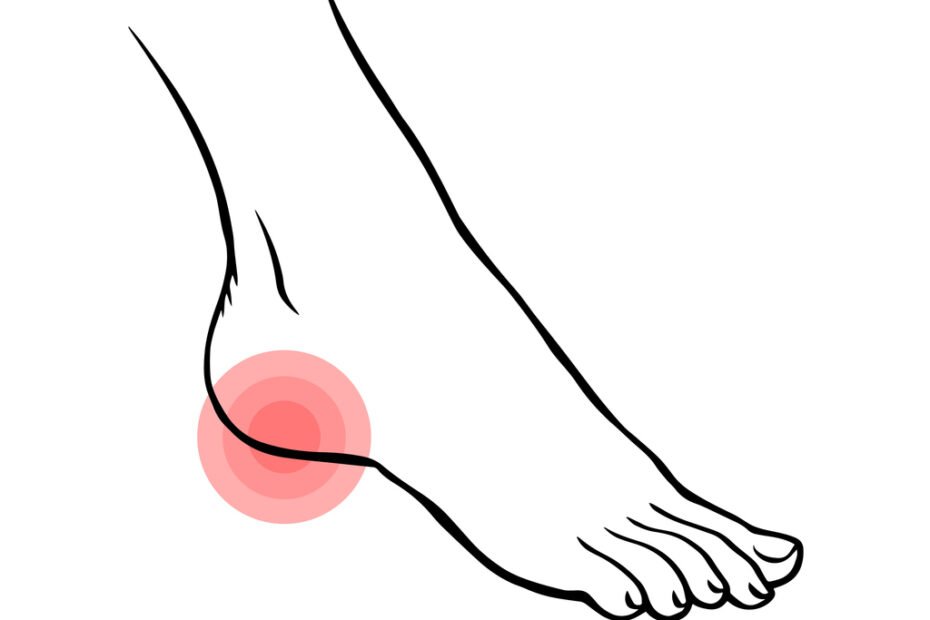Imagine waking up to a piercing pain with your first step out of bed, a reminder that your feet, the unsung heroes of your daily life, are in distress. This is a reality for many suffering from plantar fasciitis, a condition characterized by the inflammation of the plantar fascia, the thick band of tissue that runs across the bottom of your foot and connects your heel bone to your toes. It’s a condition that can feel like a relentless shadow, looming over every step, every decision to stand up and move. For those ensnared in its grip, the question isn’t just about finding relief but wondering – is plantar fasciitis permanent?
Is Plantar Fasciitis Permanent?
Well, is plantar fasciitis permanent? The answer, fortified by medical research and patient outcomes, leans towards a hopeful no. Studies suggest that with appropriate treatment, the majority of plantar fasciitis cases resolve within 6 to 18 months. According to the American Academy of Orthopaedic Surgeons, non-surgical treatments bring relief in about 90% of cases. However, the journey to recovery can be a test of patience and persistence, with treatments ranging from physical therapy and stretching exercises to more advanced options like orthotic devices or corticosteroid injections.
The variability in recovery times and treatment efficacy highlights the complex nature of plantar fasciitis. Factors such as age, weight, foot mechanics, and lifestyle choices play significant roles in the onset and progression of the condition. This complexity underlines the importance of personalized treatment plans that address the specific needs and circumstances of each sufferer.

What is Plantar Fasciitis?
Plantar fasciitis is a condition that causes pain and stiffness in the heel, typically on the bottom of the foot. The plantar fascia ligament, a thick band of tissue, helps support the arch of the foot. When this ligament becomes inflamed or irritated, plantar fasciitis develops. The inflammation can occur due to various factors, including overuse, flat feet, long periods of time standing or walking, or tight calf muscles.
Individuals with plantar fasciitis often experience a stabbing pain in the heel, especially in the morning or after periods of inactivity. This pain may subside during the day but can return after prolonged standing or physical activity. If left untreated, plantar fasciitis can become chronic, causing persistent heel pain and potentially impacting daily activities.
Symptoms of Plantar Fasciitis
Common symptoms of plantar fasciitis include heel pain, foot pain, and discomfort in the bottom of the heel. Individuals with this condition may experience a sharp, stabbing pain in the heel, particularly with the first steps of the day or after long periods of rest. The pain may also manifest as a dull ache in the arch of the foot or along the sole of the foot. Walking, running, or activities that involve the feet may exacerbate the symptoms, while rest may provide temporary relief.
In some cases, the affected foot may feel tender to the touch or show signs of inflammation, such as redness or swelling. These symptoms can significantly impact an individual’s ability to walk, exercise, or engage in regular activities.
Causes and Risk Factors for Plantar Fasciitis
Plantar fasciitis can develop due to a variety of causes and risk factors. Understanding these factors can help individuals take preventive measures and seek appropriate treatment. Lifestyle choices, such as standing or walking for long periods of time, participating in activities that place excessive stress on the feet, or sudden increases in physical activity, can contribute to the development of plantar fasciitis.
Certain physical factors, including flat feet, high arches, tight calf muscles, and being overweight, can also increase the risk of experiencing heel pain. It is essential to address these risk factors to manage plantar fasciitis effectively.

Lifestyle Factors
Lifestyle choices and activities can have a significant impact on the development of plantar fasciitis. Spending long periods of time standing or walking, particularly on hard surfaces, can place excessive stress on the plantar fascia, leading to inflammation and pain.
Individuals who engage in regular activities that strain the plantar fascia, such as running or jumping, are at greater risk of developing plantar fasciitis. Additionally, flat feet, a condition in which the arch of the foot is lower than normal, can contribute to the development of plantar fasciitis. People with flat feet may experience an altered foot structure, placing additional stress on the plantar fascia and increasing the risk of heel pain.
Physical Factors
Certain physical factors can contribute to the development of plantar fasciitis. Individuals with tight calf muscles may experience increased tension on the plantar fascia, leading to inflammation and pain in the heel. On the other hand, individuals with a high arch in their foot may have an altered foot structure, placing additional stress on the plantar fascia and increasing the risk of plantar fasciitis.
Moreover, excess weight can also contribute to the development of plantar fasciitis, as the increased pressure on the feet can strain the ligament. Recognizing these physical factors and taking steps to address them, such as stretching exercises and maintaining a healthy weight, can help manage plantar fasciitis effectively.

Diagnosis of Plantar Fasciitis
Diagnosing plantar fasciitis typically involves a combination of a clinical examination and imaging tests. Healthcare providers will often begin by gathering a medical history and conducting a physical examination of the affected foot. The examination may involve assessing the patient’s gait, foot mechanics, and the range of motion.
Tenderness in the arch of the foot or the base of the heel is usually present in plantar fasciitis cases. In some instances, healthcare providers may recommend imaging tests, such as x-rays, ultrasound, or MRI scans, to rule out other foot conditions, detect any bone spurs, or visualize the extent of the tissue damage in the plantar fascia.
Clinical Examination
During a clinical examination for plantar fasciitis, a healthcare provider will typically start by gathering the patient’s medical history, including information about the onset of symptoms, activities that aggravate the pain, and any previous treatments or injuries. They will then proceed with a physical examination, which may involve palpating the foot to identify areas of tenderness, tightness, or inflammation.
The healthcare provider may also assess the patient’s gait and foot mechanics, looking for any abnormalities that may contribute to the development of plantar fasciitis. In some cases, the healthcare provider may refer the patient to a physical therapist who specializes in treating foot conditions, allowing the patient to receive specialized care and guidance in managing plantar fasciitis effectively.
Imaging Tests
Imaging tests are often used in the diagnosis of plantar fasciitis to confirm the condition and evaluate the extent of tissue damage. X-rays are commonly performed to rule out the presence of stress fractures in the heel bone and to detect the presence of bone spurs, which can contribute to heel pain. Ultrasound imaging can also be used to visualize the plantar fascia and assess the degree of inflammation or tearing in the ligament.
MRI scans may be recommended in cases where further evaluation of the soft tissues, such as the plantar fascia, is necessary. These imaging tests provide valuable information to healthcare providers, ensuring an accurate diagnosis and enabling the development of an appropriate treatment plan for plantar fasciitis.

Common Treatments for Plantar Fasciitis
Plantar fasciitis can be managed through a combination of conservative treatments and medical interventions. The treatment options primarily aim to reduce pain, inflammation, and promote healing of the plantar fascia.
At-home remedies, medical interventions, physical therapy, and specific exercises can all play a crucial role in relieving symptoms and improving foot function. With the right treatment approach, individuals with plantar fasciitis can expect significant improvement in their symptoms and a reduction in the impact of the condition on their daily activities.
At-Home Remedies
At-home remedies can provide relief and help manage the symptoms of plantar fasciitis. Applying ice packs to the affected area can help reduce pain and inflammation. Night splints, which keep the foot in a stretched position while sleeping, can effectively stretch the plantar fascia and alleviate morning heel pain. Resting the affected foot and avoiding activities that worsen the symptoms can help promote healing.
Elevating the foot when resting or sleeping can also reduce swelling and discomfort. Incorporating these simple remedies into the daily routine can have a significant impact on managing the pain and inflammation associated with plantar fasciitis.
Medical Interventions
In cases where conservative treatments are not sufficient to manage plantar fasciitis, medical interventions may be recommended. Corticosteroid injections can provide short-term relief by reducing inflammation in the plantar fascia. Custom orthotic inserts, prescribed by a podiatrist, can provide long-term support and help alleviate symptoms.
A consultation with a healthcare provider, such as a podiatrist, can ensure an accurate diagnosis and offer personalized treatment options based on the individual’s specific needs and goals. These medical interventions, when utilized appropriately, can play a vital role in managing plantar fasciitis effectively.
Physical Therapy and Exercises
Physical therapy is often recommended as part of the treatment plan for plantar fasciitis. Physical therapists can provide guidance on stretching exercises, strengthening the lower leg muscles, and foot-specific exercises to help improve foot function, reduce pain, and prevent recurrence of plantar fasciitis. Some effective physical therapy techniques and exercises include:
- Calf stretches, particularly the standing calf stretch and the wall calf stretch, to alleviate tightness in the calf muscles and reduce strain on the plantar fascia.
- Rolling the sole of the foot over a tennis ball or frozen water bottle to massage the plantar fascia and relieve tension.
- Strengthening exercises for the foot muscles, such as toe curls, toe spreads, and arch lifts, to improve foot stability and reduce stress on the ligament.
- By incorporating these physical therapy exercises into the treatment regimen, individuals with plantar fasciitis can experience enhanced foot function, reduce pain, and improve the impact of conservative treatments.

Preventive Measures for Plantar Fasciitis
Preventing plantar fasciitis or reducing the risk of recurrence involves implementing certain measures to support foot health and minimize stress on the plantar fascia. These preventive measures primarily focus on wearing appropriate footwear, adopting proper foot care practices, and engaging in regular stretching and exercise routines. By following these recommendations, individuals can minimize the risk of plantar fasciitis and maintain overall foot health.
Footwear Recommendations
Wearing the right footwear is essential in preventing plantar fasciitis. Here are some recommendations to consider:
- Choose supportive shoes that provide arch support, heel cushioning, and shock absorption. Look for shoes with a firm heel counter to stabilize the feet.
- Consider using orthotic inserts or custom insoles to provide additional arch support and reduce strain on the plantar fascia.
- Opt for shoes with ample cushioning in the heel and forefoot areas to minimize the impact on the feet during walking or running.
- Ensure that your shoes fit properly and allow enough room for your toes to move freely.
- Avoid high heels and flat shoes without proper arch support, as they can increase stress on the plantar fascia.
- By following these footwear recommendations, individuals can provide the necessary support to their feet, reducing the risk of developing plantar fasciitis or preventing its recurrence.
Regular Stretching and Exercise
Incorporating regular stretching and exercise routines into your daily activities can help prevent plantar fasciitis and improve foot function. Here are some stretching and exercise recommendations:
- Perform calf stretches to alleviate tightness in the calf muscles, which can potentially reduce strain on the plantar fascia.
- Strengthen the foot muscles through exercises like toe curls, toe spreads, and arch lifts, which helps improve foot stability and promote proper foot mechanics.
- Include ankle rotations to improve flexibility in the arch of your foot, reducing strain on the ligament.
- Engage in regular low-impact activities, such as swimming, cycling, or yoga, to maintain overall foot health without placing excessive stress on the plantar fascia.
- By incorporating regular stretching and exercise activities, individuals can enhance foot flexibility, strength, and stability, reducing the risk of plantar fasciitis and promoting foot health.
Living with Plantar Fasciitis
Living with plantar fasciitis can be challenging, but there are strategies individuals can adopt to cope with the pain and manage the condition effectively. By implementing coping mechanisms and making necessary adjustments to daily activities, individuals can minimize the impact of plantar fasciitis on their quality of life.

Coping Mechanisms
Coping with chronic heel pain requires the adoption of various strategies, such as:
- Implementing regular periods of rest for the affected foot, avoiding activities that exacerbate the pain.
- Utilizing pain management techniques, such as applying ice packs, taking over-the-counter pain medications, or using orthotic devices, to alleviate discomfort.
- Seeking emotional support from friends, family, or support groups, as chronic pain can take a toll on mental well-being.
- Exploring alternative activities and hobbies that are foot-friendly to maintain an active lifestyle while minimizing foot strain.
- Modifying the work environment, if possible, to reduce stress on the feet, such as wearing supportive footwear or using anti-fatigue mats.
- By adopting these coping mechanisms, individuals with plantar fasciitis can better manage the pain, improve their quality of life, and find ways to engage in activities they enjoy.
Impact on Daily Life
Plantar fasciitis can significantly impact an individual’s daily life, making even simple activities challenging. The pain and discomfort associated with plantar fasciitis can affect one’s ability to walk, stand, exercise, and participate in regular activities.
The chronic heel pain can interfere with work, hobbies, and quality time spent with friends and family. However, by seeking appropriate treatment, wearing the right footwear, and adopting lifestyle modifications, individuals can minimize the impact of plantar fasciitis on their daily lives.
Understanding the limitations imposed by plantar fasciitis, implementing self-care strategies, and seeking support can improve overall well-being and enhance the quality of life for individuals living with this condition.
Plantar Fasciitis and Sports
For individuals involved in sports or physical activities, plantar fasciitis can pose unique challenges. However, with proper management and precautions, individuals can continue to engage in sports without exacerbating the condition. Understanding how plantar fasciitis can affect athletes and implementing strategies to mitigate symptoms are vital in maintaining sports performance and ensuring proper recovery.
Dealing with Plantar Fasciitis as an Athlete
Athletes with plantar fasciitis may need to modify their training routines to allow for proper healing and reduce stress on the foot. Here are some considerations for athletes with plantar fasciitis:
- Choose appropriate footwear that provides arch support, cushioning, and stability.
- Implement warm-up routines and stretching exercises specific to the calf muscles and plantar fascia before engaging in sports activities.
- Consider using custom orthotics to provide additional support during sports participation.
- Pay attention to early signs of foot pain and address them promptly to prevent further aggravation of the condition.
- Consult with a sports medicine specialist for personalized advice and treatment recommendations tailored to the athlete’s specific needs and goals.
- By adopting these strategies, athletes can effectively manage plantar fasciitis, minimize the risk of re-injury, and continue participating in sports with reduced discomfort and improved performance.

What are the long-term effects of plantar fasciitis if left untreated?
If left untreated, plantar fasciitis can lead to chronic heel pain and potentially impact an individual’s mobility and quality of life. Without appropriate treatment, the symptoms of plantar fasciitis may persist and worsen over time, making it more challenging to manage. Untreated plantar fasciitis can also lead to changes in gait and posture, potentially affecting the feet, knees, hips, and back, and causing additional foot, leg, or lower back problems. In severe and persistent cases, more aggressive treatments, such as corticosteroid injections or surgery, may be required. To prevent long-term complications, seeking medical attention and following the recommended treatment plan is crucial for individuals with plantar fasciitis.
Can I still exercise with plantar fasciitis, or will this make it worse?
While it is generally recommended to avoid high-impact activities and exercises that place excessive stress on the feet if you have plantar fasciitis, it doesn’t mean you have to completely avoid exercise. Low-impact activities, such as swimming, cycling, and yoga, are generally better options as they place less strain on the plantar fascia. It is essential to listen to your body and avoid any activities that exacerbate the pain during or after the exercise. Consult with a healthcare provider or physical therapist for specific exercise recommendations tailored to your condition. They can provide guidance on suitable exercises, stretching routines, and modifications to minimize discomfort and prevent the worsening of plantar fasciitis symptoms.

Conclusion – Is Plantar Fasciitis Permanent?
Is plantar fasciitis permanent? No, while daunting, is not an insurmountable challenge. With the right approach, the shadow of pain can lift, revealing a path to recovery and resilience. The journey may be long, and the steps taken may vary widely, but the destination—a life free from the constant reminder of plantar fasciitis—is within reach. As we move forward, let’s carry the torch of hope and determination, remembering that the road to recovery is paved with patience, understanding, and the right support. So, as you take your next step, ask yourself, what can I do today to move towards a pain-free tomorrow?
I hope you found this blog helpful and please feel free to comment and share.
Thanks for reading!
 | Tracy J. Founder, The heel GP |
